 |
Ugo Amaldi, TERA Foundation |
| Ugo Amaldi is president of the Italian Foundation TERA (Tumour therapy with hadronic radiations) since its creation in 1992. In the 60s has been Director of Research at the National Health Institutes in Rome (ISS), where he worked on radiation physics and nuclear physics. After the discovery of the proton-proton rising cross-sections, in 1973 he was offered a senior position at CERN. Here he worked in particle physics and accelerator developments; in particular, he directed, from 1981 to 1994, the International collaboration DELPHI formed of about five hundred physicists coming from twenty countries. Between 1990 and 2006 he was Physics Professor in Florence and Milan. He is Doctor honoris causa of the Universities of Lyon, Helsinki, Uppsala, and Valencia and, since 2012, is a Fellow of the European Physical Society and Distinguished Affiliated Professor at TUM (Technische Universität München). He has attributed the Bruno Pontecorvo Prize (first edition) for his contributions to the study of weak interactions and to the unifications of the fundamental forces. Under his guidance TERA – which has its offices and laboratories at CERN – developed, in collaboration with CERN, two novel types of accelerators for tumour therapy. The first one has been built by the Italian CNAO Foundation in Pavia (Italy) and has treated more than 600 patients. The second one is a linac, which is being built at CERN by the Suisse Company A.D.A.M. (Geneva). About 500 publications account for his scientific activities in the fields of physics of atoms, nuclei, fundamental particles, accelerators and medical physics. In the last 30 years, more than one-third of the Italian high school pupils have studied physics on his textbooks. | |
 |
Giovanni Anelli, CERN |
|
Giovanni joined CERN’s Knowledge Transfer Group in 2010 as Technology Transfer Officer and was appointed Head of Knowledge Transfer Group in August 2011. Prior to this, he worked for three years for LEM SA, a company market leader in providing solutions for measuring electrical parameters, and managing projects on the design of Integrated Circuits (ICs) for current transducers to be used in industrial and automotive applications. Before this, Giovanni worked for 10 years in CERN’s Microelectronics Group (Physics Department), designing several low-noise low-power analogues and mixed-signal VLSI circuits for High-Energy Physics applications. His research work also dealt with techniques to design radiation-tolerant integrated circuits in deep submicron CMOS technologies, an approach which is now employed by the large majority of the integrated circuits of the Large Hadron Collider (LHC) at CERN. Giovanni has an M.S. in Electronics Engineering from the Polytechnic of Milan (Italy) in 1997, a PhD in Electronics Engineering (with honours) from the Polytechnic of Grenoble (France) in 2000 and an EMBA from HEC in Paris (France) in 2008. He is the author and co-author of more than 70 publications and is an IEEE senior member. |
|
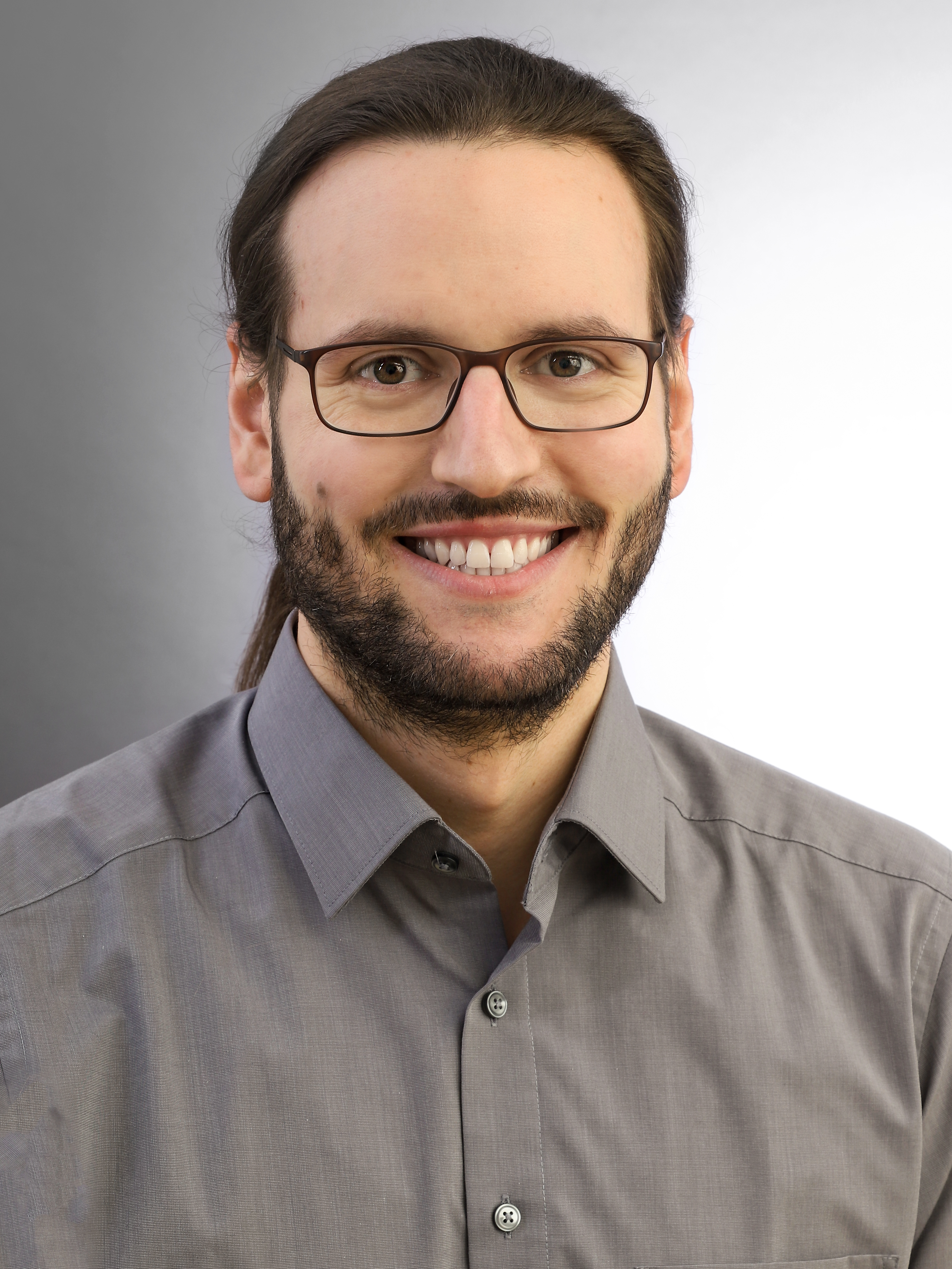 |
Kilian Baumann, Marburg Ion Beam Therapy Center |
| Kilian-Simon Baumann is a Postdoc at the Radiotherapy department of Philipps-University Marburg and a Medical Physicist at the Marburg Ion-Beam Therapy Center. He received his PhD in 2020 and is working in the field of particle therapy for lung cancer patients and Monte-Carlo based dosimetry in clinical proton and carbon-ion beams. His research focuses on investigating lung modulation effects in particle therapy and track structure simulations of clinical particle beams both on microscopic and macroscopic scales. | |
 |
Elena Benedetto, SEEIIST |
|
Elena is the coordinator of the SEEIIST* medical accelerator facility design. After more than 10 years at CERN as an accelerator physicist, I joined the TERA Foundation in 2018 to work on medical applications and to initiate the studies for SEEIIST, in collaboration with CERN Next Ion Medical Machine Study (NIMMS) initiative and several European partners. Since April 2021, I’m hired directly by the SEEIIST Association. * SEEIIST: The South-East European International Institute for Sustainable Technologies |
|
 |
Maria Giuseppina Bisogni, University of Pisa and INFN Pisa |
| Maria Giuseppina Bisogni is an associate professor of medical physics at the Department of Physics "E. Fermi" of the University of Pisa and a research associate at the Pisa section of the National Institute of Nuclear Physics (INFN). In her career, she has always been involved in the development of systems for medical imaging using techniques derived from nuclear physics. She has directed numerous research projects including the INSIDE project, funded by the Italian Ministry of University and Research, INFN and the national centre for Hadrontherapy Oncology (CNAO). INSIDE is an imaging system for the in vivo verification of hadrontherapy treatments currently in a clinical trial at CNAO. | |
 |
Eleanor Blakely, LBNL (retired) |
| Eleanor A. Blakely is a retired Senior Staff Biophysicist with a 47-year professional career at the Lawrence Berkeley National Laboratory conducting molecular, cellular and animal radiobiological research directed at studying the basic mechanisms of radiation responses, with an emphasis on charged particle radiation effects. She currently is an Adjunct Research Professor in both the Departments of Basic Sciences and of Radiation Medicine at Loma Linda University, School of Medicine, Loma Linda, CA. Dr Blakely is the recipient of several awards including the 20th Gray Medal of the ICRU in 2019. | |
 |
Jeff Buchsbaum, NCI |
|
Jeffrey “Jeff” Buchsbaum, MD., PhD, A.M. is the Medical Officer in the Clinical Radiation Oncology Branch (CROB) in the Radiation Research Program of the National Cancer Institute. The CROB promotes and manages the support for a portfolio of research grants and contracts that advance translational and clinical research in radiation therapy. Dr Buchsbaum’s programmatic experience includes membership in teams conducting the development, evaluation, and management of multi-disciplinary research programs and consortia including photodynamic therapy, CTEP agent and radiation therapy, high-LET translational radiobiology, and other areas. He contributes to CTEP review, grants management, and unique opportunities for science associated with new technologies such as hadron therapy, biosensors, and the interface of missions across the USG where RRP science is a focus. His interests are both focused and broad - looking at quality assurance, pediatric radiation therapy, LINAC research, international collaborations, and late effects. He is the senior pediatric radiation oncologist seeing patients on the main NIH campus. |
|
 |
Alberto Degiovanni, Avo-ADAM |
| Alberto Degiovanni is Deputy Technical Director and Group Leader for Accelerator Physics at AVO-A.D.A.M (Meyrin, Switzerland), where he has been working over the past 6 years in the design, development, testing and overall integration of an accelerator complex for proton and ion therapy. After a Master in Physics at the University of Milan, he has accumulated more than thirteen years of experience in ion beam therapy and linac science and technology both in the industrial and academic environments, obtaining a PhD at EPFL (Lausanne, Switzerland) in collaboration with the TERA Foundation and CERN and a CERN fellowship working on high-frequency RF linac tests for compact accelerators. | |
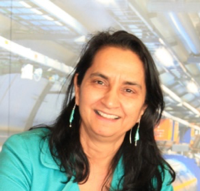 |
Manjit Dosanjh, University of Oxford / CERN/SEEIST |
| Professor Manjit Dosanjh is former Senior Advisor for Medical Applications at CERN, the particle physics laboratory in Geneva, Switzerland and a visiting professor at the University of Oxford. She is an experienced molecular toxicologist in mechanisms of cancer resulting from environmental exposure and damage, and she serves on the International Cancer Expert Corps Board of Directors. She graduated in biochemistry/chemistry and holds a PhD in biochemical engineering from the UK. Following her post-doctoral position at MIT, she has held positions as senior research staff at Lawrence Berkeley National Laboratory, professor at Jackson State University, and visiting professor at the University of Padua, University of Cagliari and University of Surrey. | |
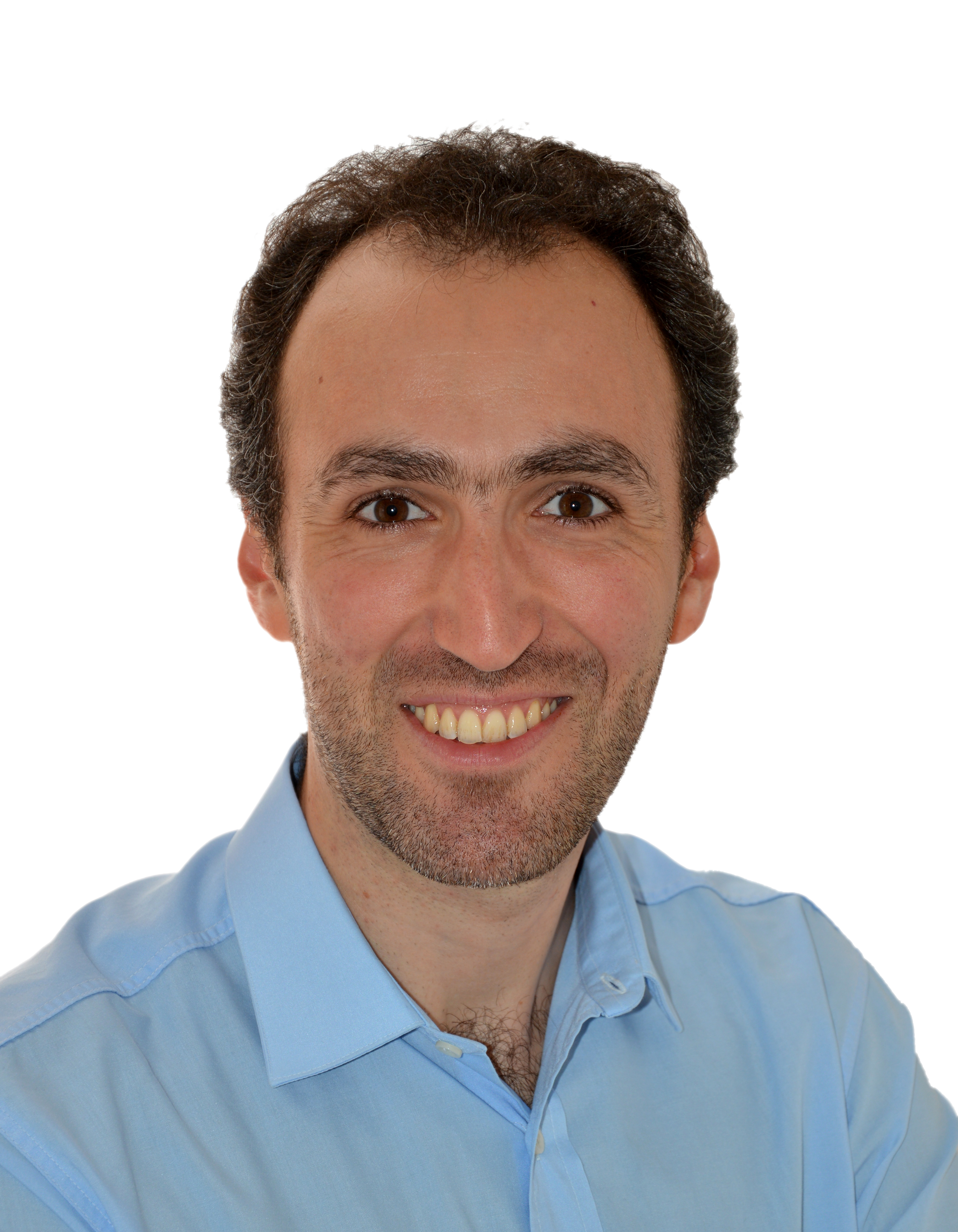 |
Adriano Garonna, EBAMed |
| I am a physicist by training, specialised in technology for proton therapy/ion beam therapy. I did a PhD on ion source and cyclotron design at CERN with the TERA Foundation, including an experimental part at the Paul Scherrer Institute in Villigen (CH). I followed with a Post-Doc at CERN on the design of a slow extraction scheme for biomedical research for the LEIR synchrotron. I then moved to the treatment centre EBG MedAustron Gmbh in Austria where in 2014-2016 I was leading the accelerator commissioning team in the ramp-up towards first patient treatments. I came back to CERN, where I became Technical Director at the TERA Foundation leading small R&D projects for companies and clinical centres. I am now co-founder and CTO at EBAMed SA in Geneva. | |
 |
Christian Graeff, GSI |
|
Christian Graeff received his PhD in Biomedical Engineering at the Hamburg University of Technology in 2010. Since 2012, he is the group leader of Medical Physics in the Biophysics department of GSI, Darmstadt, Germany, since 2018, he is the deputy scientific director of this department and since 2021 Professor for Technology of Radiotherapy at TU Darmstadt, Germany. His main research interests are advanced treatment planning and delivery strategies for particle therapy, in particular for moving targets. Dr Graeff devised 4D-optimization strategies for conformal motion mitigation, which his group implemented in treatment planning and dose delivery systems. Dr Graeff has published 50 peer-reviewed manuscripts and more than 100 conference contributions. |
|
 |
Alexander Gerbershagen, PARTREC |
| Alexander Gerbershagen has a master’s degree in mathematics from the University of Cambridge and a doctorate in particle physics from the University of Oxford, UK. He has worked at CERN on the beamline design of a future electron-positron collider CLIC and later at Paul Scherrer Institute on the maintenance and further development of the proton therapy facility PROSCAN. In particular, he investigated the potential use of the superconducting magnets in future gantries and received for this work the “Best Publication of the Year” award from the Journal of Medical Physics (ZMedPhys) as well as the “Prize for Extraordinary Achievements” from Paul Scherrer Institute. He worked as a staff beam physicist at CERN, where he has been responsible for the operation of beamlines for fixed-target experiments and test beams, while contributing to a number of particle therapy projects, such as VHEE-FLASH and GaToroid. Since 2022 he is an Associate Professor at University Medical Center Groningen in the Netherlands, where he leads the accelerator and radiation physics research at Particle Therapy Research Center (PARTREC). | |
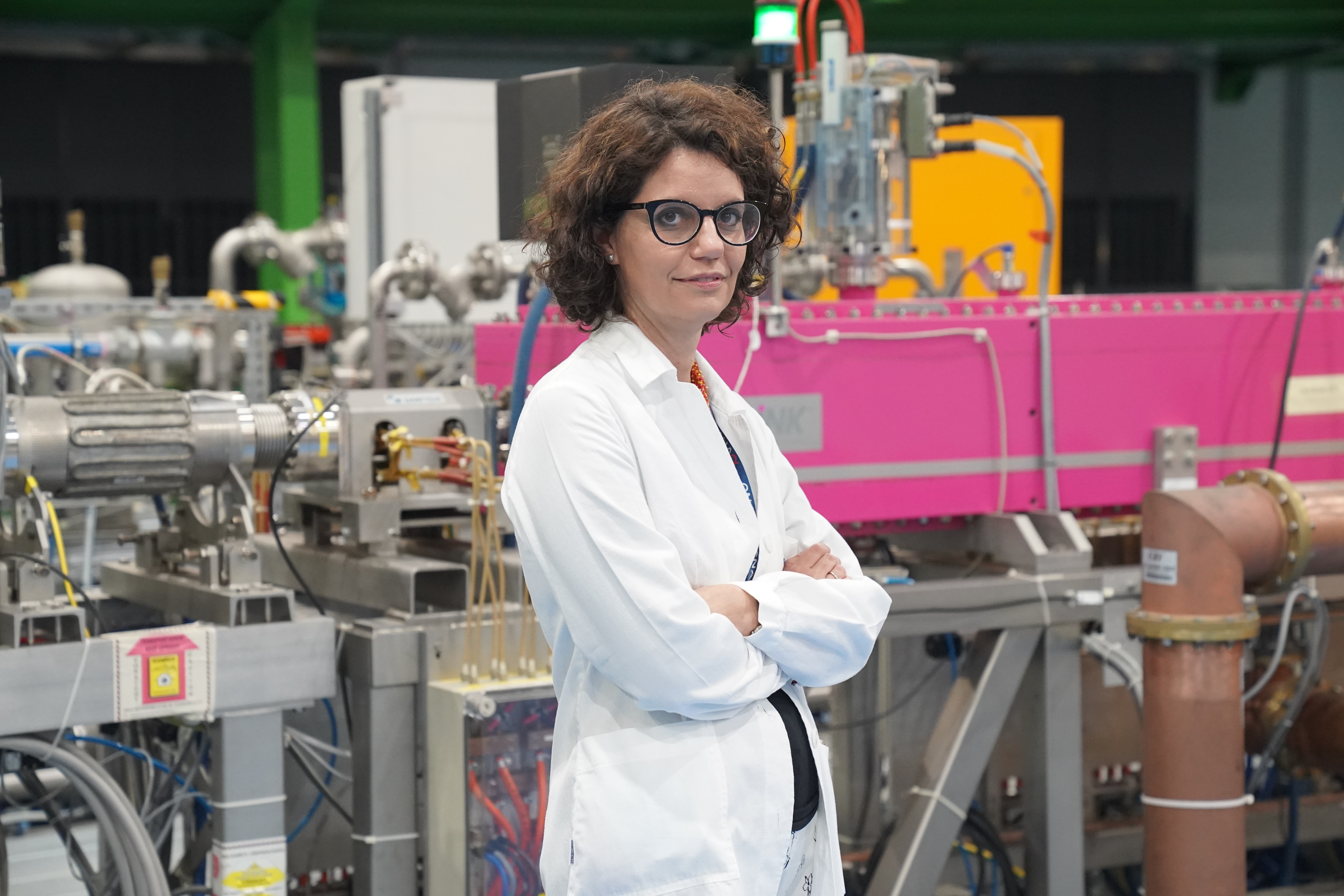 |
Angelica Facoetti, CNAO |
| Graduated in Biological Sciences at the University of Pavia, Angelica Facoetti holds a PhD in Cell Biology. In 2006 she obtained the European Master Degree in Radiation Biology at the University College of London and subsequently the title of Specialization in Clinical Pathology at the University of Pavia. Since 2010 she is responsible for the radiobiological experimental activities at the National Center for Oncological Hadrontherapy (CNAO) of Pavia. She is adjunct professor of Applied Biology at the University of Milan for the School of Specialization in Medical Physics and of Biology, Anatomy and Physiology for the master's degree in Physical Sciences at the University of Pavia. | |
 |
Yiota Foka, GSI |
| Foka is a senior researcher currently involved in medical applications and the development of a next-generation ion facility for tumour cancer research and therapy with ions within the framework of the collaboration of the NIMMS/CERN group and her home institute GSI, where she holds a permanent position. Her career was mostly developed within the ALICE experiment at the CERN LHC, where she also served in management positions such as deputy physics coordinator, outreach coordinator, and system coordinator for data quality monitoring and event display. Active in the dissemination of information on scientific advances via the organization of conferences, seminars, and educational outreach activities she introduced and coordinates the new particle therapy masterclass since 2019. | |
 |
Piero Fossati, MedAustron |
|
Piero Fossati graduated in Medicine and Surgery at the University of Rome in 2002, completed his specialization in Radiotherapy in 2006 at the University of Milan and completed his training in particle therapy at NIRS in Chiba Japan in 2007 and 2009. He has participated in establishing clinical operations with protons and carbon ions at CNAO (Pavia, Italy). He is now head of the carbon ion program and scientific director of MedAustron (Wiener Neustadt, Austria) . His main interest is the clinical use of carbon ion radiotherapy focusing on producing high-level evidence for established indications and exploring new potential applications and synergies. He is co-author of the ICRU report on carbon ions radiotherapy. |
|
 |
Karen Kirkby, Manchester University |
|
Prof. Karen Kirkby leads the Manchester Proton Therapy research bringing together the research effort at the University of Manchester and The Christie NHS Foundation Trust. She has published over 200 peer reviewed papers including articles in Nature and written for popular science magazines and newspapers. Her work can be seen at Science Museum’s Cancer Revolution exhibition. Karen’s research group now numbers over 30 people and has built a dedicated proton therapy research facility. Karen leads the EU project https://protonsinspire.eu and CRUK RadNet Emerging Radiotherapies Working Group. She has a research grant portfolio of over £28M. Karen was one of the organisers of PTCOG58 and a new conference series https://frpt-conference.org/ |
|
 |
Kenneth Long, Imperial College |
| Ken Long is a Professor of High Energy Physics at Imperial College London and STFC. His research is focused on the development of transformative technologies for the advancement of radiation biology. The same technologies have the potential also to transform the study of the properties of the fundamental constituents of matter. He is co-spokesperson of the LhARA collaboration, has a leading role in the development of nuSTORM as a facility for the study of the neutrino and as a muon collider technology test bed and is the spokesman of the MICE collaboration. | |
 |
Giulio Magrin, MedAustron |
| Giulio Magrin is an Italian physicist who began studying ionizing radiation and the medical applications of microdosimetry in 1991 at the Laboratories of Legnaro, Italy. As a visiting researcher at Columbia University, he has used microdosimetry in diagnostics. At the TERA Foundation, hosted at CERN in Geneva, he has developed innovative proton accelerators for therapy. In the same context, he worked at ADAM, a Swiss company born as a spin-off of CERN. Since 2011 he has combined his experiences in microdosimetry and ion accelerators by working at MedAustron, the Austrian centre for ion therapy. He has coordinated a European network activity in microdosimetry and collaborates with IAEA and ICRU. He holds a patent on accelerators for ion therapy. | |
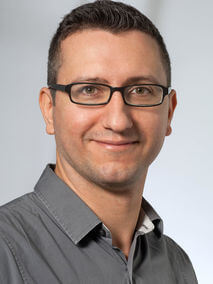 |
Andrea Mairani, HIT |
| Andrea Mairani got his degree in Nuclear Physics at the University of Milan followed by a PhD in Medical Physics from the Universities of Pavia and Houston. He subsequently worked for the establishment of the Heidelberg Ion-Beam Therapy (HIT) as a postdoc then He moved to the National Center for Oncological Hadrontherapy (CNAO) as responsible for Monte Carlo calculations for the commissioning and the start-up of the clinical operation at CNAO. He returned in 2016 to HIT establishing the BioPT (Biophysics in Particle Therapy) group. His main research interests lie in the development of Monte Carlo methods, advanced biological models and new treatment modalities (multi-ions, ion arc and FLASH) for particle therapy. He is the author or co-author of over 130 peer-reviewed papers. | |
 |
Katia Parodi, LMU |
| Katia Parodi received her Ph.D. in Physics from the University of Dresden, Germany, in 2004. She then worked as postdoctoral fellow at Massachusetts General Hospital and Harvard Medical School in Boston, USA. In 2006 she returned to Germany as tenured scientist and group leader at the Heidelberg Ion Therapy Center, obtaining in 2009 her Habilitation from the Heidelberg University. Since 2012 she is full professor and Chair of Medical Physics at the Physics Faculty of the Ludwig-Maximilians-Universität München (LMU) in Munich, where she initiated a dedicated curriculum for Medical Physics within the Physics Master of Science study. Her main research interests are in high precision image-guided radiotherapy with a special focus on ion beams, from advanced computational modeling to experimental developments of novel methods for imaging and in-vivo ion range monitoring for pre-clinical and clinical applications. | |
 |
Marco Pullia, CNAO |
|
Marco Pullia got his degree in Physics at the "Università degli studi di Milano" in 1992 with a thesis on a study about FELs and LINACs titled “New techniques for acceleration: CLIC and ELFA”. He then got a PhD in physics at the "Université Claude Bernard - Lyon 1" in 1999 with a thesis on slow extraction from synchrotrons titled “Dynamics of slow extraction and its influence on transfer line design”. He contributed to the PIMMS study and successively he participated in the construction of the CNAO accelerator where he was responsible for the accelerator design, parameters and operation. He is presently director of the research and development department of the CNAO foundation in Pavia, Italy. His research interests are in the improvement of hadrontherapy, both on the side of accelerator development and on the side of the improvement of treatment delivery and verification. |
|
 |
Ash Ravikumar, CERN |
|
Ash joined CERN’s Knowledge Transfer Group in August 2019 as Entrepreneurship Development Officer, with responsibility for managing the Business Incubation Centre (BIC) network and foster a culture of entrepreneurship at CERN. Prior to joining CERN, Ash held roles in Business development and commercialization at universities in the USA and Australia, and with Honeywell in India. Ash holds a Masters's in Electrical Engineering and Entrepreneurship from the University of South Florida, USA. |
|
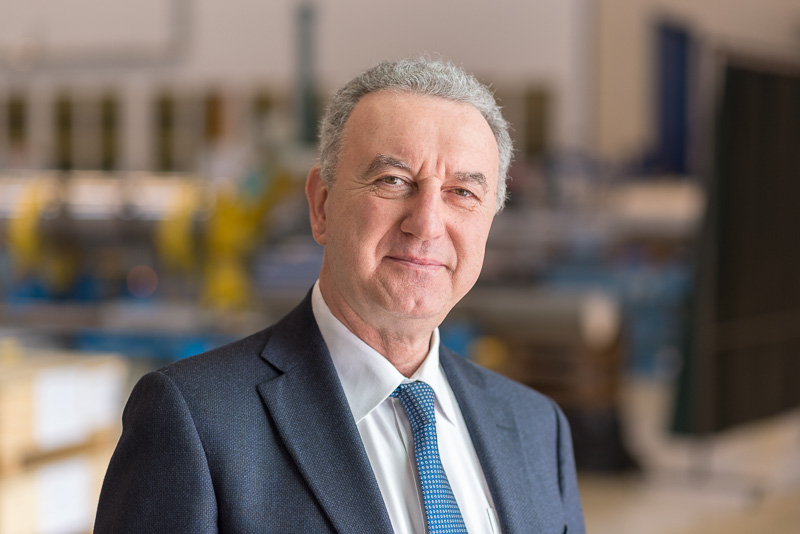.jpg) |
Lucio Rossi, INFN |
| Lucio Rossi is a full professor in the Physics Dept. of the University of Milan. For twenty years he was at CERN, where he led the LHC Magnet Construction and then the High Luminosity LHC project, till 2020. He teaches Accelerator Physics for Masterclasses and Laboratory Physics for bachelor classes. He is also associated with INFN (Italian Institute for Nuclear and Particle Physics) and he is active in studying and designing new Superconducting Magnets for advanced Hadron Therapy and in investigating very high field magnets for the post-LHC next-generation collider. | |
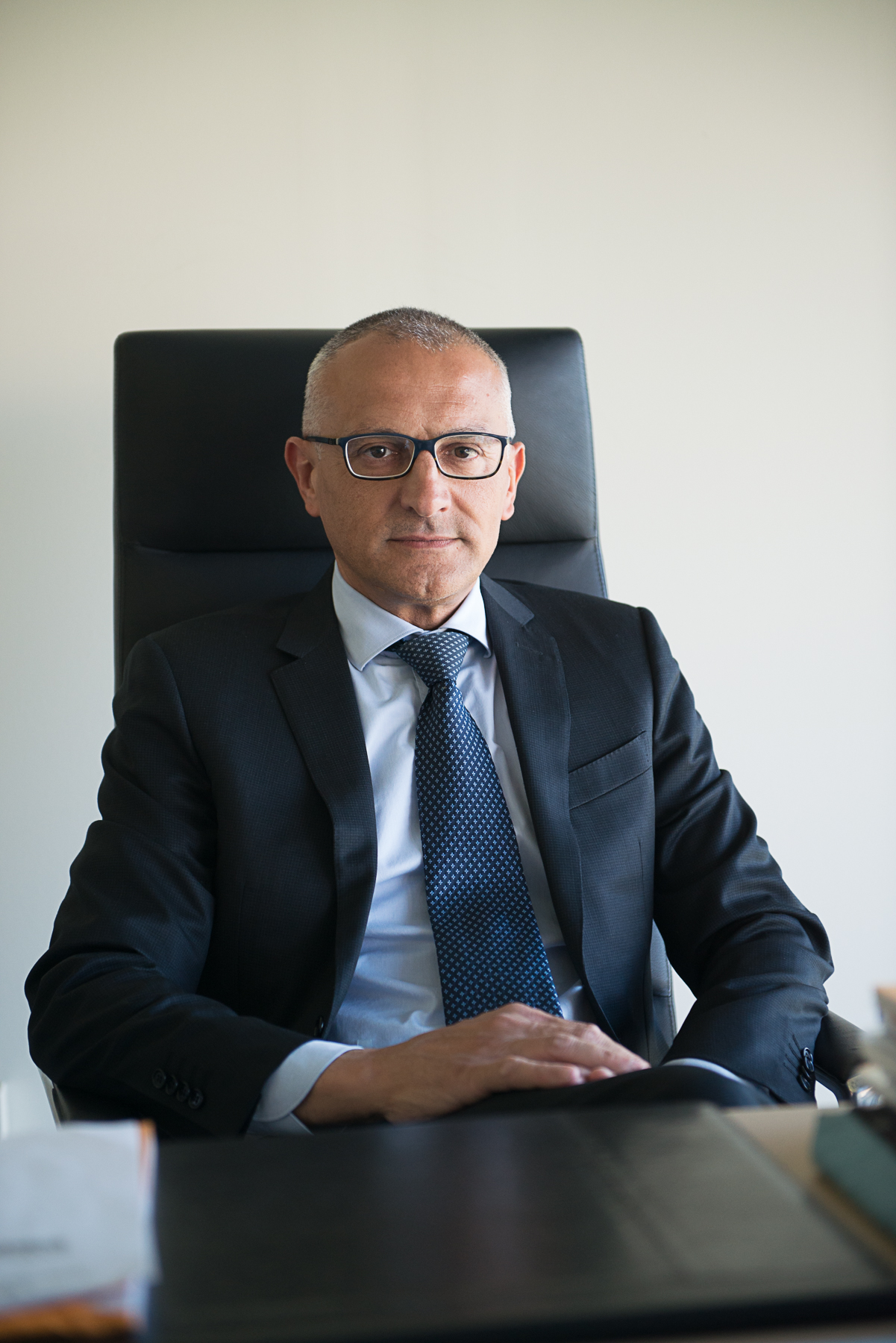 |
Sandro Rossi, CNAO |
|
Sandro Rossi, physicist, is Director General of the National Centre for Oncological Hadrontherapy (CNAO) in Pavia (Italy), established and financed by the Italian Ministry of Health with the purpose of treating oncological patients with particle beams (protons and carbon ions). CNAO treated so far 4000 patients. Sandro Rossi is also Coordinator of the international project HITRIplus (Heavy Ion Therapy Research Integration plus) approved and financed by EU commission for the period April 2021- March 2025. HITRIplus is a multidisciplinary collaborative project aiming to integrate and advance biophysics and medical research in cancer treatment with heavy ions and in parallel jointly developing innovative technologies for the next generation tools. It is a consortium composed of 22 Institutes from 14 European countries engaging all relevant stakeholders and bringing together the four European ion therapy centres with leading EU industries, academia and research laboratories. During his career, Sandro Rossi has published several scientific articles and has participated as speaker in many conferences. |
|
 |
Mariusz Sapinski, PSI |
| Mariusz Sapinski is an accelerator physicist, expert in beam instrumentation. He graduated in experimental particle physics (ATLAS experiment) from Jagiellonian University in Cracow. After his PhD he worked on space experiment (AMS) and then switched to accelerator physics, first at CERN, then in GSI where he served as responsible for High-Energy beam lines and finally in Paul Scherrer Institut (PSI) where he is responsible for large part of proton instrumentation including proton therapy facility. In between, he also worked for SEEIIST on design of the new carbon therapy facility. | |
 |
Mario Schrenk, MedAustron |
|
Mario Schrenk is the head of the Medical Device Affairs group at MedAustron. He is leading a group of experts taking care of system architecture, requirement engineering, change management, risk management and test management for the MedAustron Particle Therapy Accelerator, which has a CE certificate according to the Medical Device Regulation. Mario is participating in the standardisation expert group for medical devices of OVE (Austrian association for electrical engineering) and the IEC TC 62 for electrical equipment in medical practice. Mario gained a master’s degree in Physics at the University of Vienna and a PhD in Mechanical and Industrial Engineering at the Technical University of Vienna. To gain expertise in the field of regulatory affairs, he completed a Master in EU Regulatory Affairs at the Danube University Krems on the topic of "Setting up a Process for Assessment of Conformity to (EU) 2017/745". |
|
 |
Joao Seco, DKFZ |
| Prof Seco graduated with a PhD from the University of London, at the Institute of Cancer Research (ICR) and Royal Marsden Hospital in London, UK. He then went on to become an Assistant Professor of Radiation Oncology at Harvard Medical School in Boston, working at the Massachusetts General Hospital (MGH). He then returned to Europe to work at the German Cancer Research Center, DKFZ in Heidelberg, heading up a new group dedicated to ion beam research and with the focus on 1) novel imaging technologies to reduce Bragg peak positioning errors in patients and 2) on investigating the mechanism of radiation triggered DNA damage via reactive oxygen species. He is also presently the Chair of Medical Physics at the Department of Physics and Astronomy, Heidelberg University and is a member of the EFOMP Scientific Committee, representing the DGMP, German Society for Medical Physics. | |
 |
Luka Sepetavc, Cosylab |
| Luka Šepetavc has graduated from the Faculty of Computer and Information Science in Ljubljana, Slovenia and has been with Cosylab since 2009. Initially, he worked as an FPGA developer and developer of low-level software in timing and safety-critical systems. Later he transitioned into risk management and quality assurance. Currently, he is a senior system engineer and project manager in the area of medical devices and heavy ion therapy systems. | |
|
|
Antonella Del Rosso |
|
A physicist by training, Antonella has been involved in science communication at CERN for over twenty years. She has been Editor of the CERN Courier, responsible for internal communication and communication for the CERN Alumni project. Since 2012, she has been responsible for the Italian Teacher Programs (Italian Teacher Programs). she has been involved in educational projects aimed at young students and has been Project Leader of CERNland, CERN's website for children (cernland.net).She is currently working on the new CERN exhibits and is responsible for the content of Microcosm, Globe, CERN visit itineraries and travelling exhibitions.
|
|
 |
Lembit Sihver, Technische Universität Wien |
| Dr L. Sihver is a founder & CTO of the Cosmic Shielding Corporation in the USA, Director of the CRREAT project at the NPI of the CAS in the Czech Republic and a Professor at the Chalmers University of Technology in Sweden. 2002 – 2014, he was a full Prof. and the Head of Nuclear Science and Engineering at Chalmers. In 2015, he became a full Prof. of Medical Radiation Physics with Specialization in Ion Therapy and Head of the dept. of Radiation Physics, at TU Wien in Austria. He was also the Head of Applied Medical Physics Research at the MedAustron ion beam therapy centre. | |
 |
Pablo Garcia Tello, CERN |
|
Pablo Garcia Tello Graduated in Physics from the Complutense University of Madrid, Spain and has a PhD in Material Science from the Basque Country University in San Sebastian, Spain. He was a Postdoctoral Associate and Teaching Assistant of Semiconductor Processing Technology in the Department of Material Science and Engineering at the Massachusetts Institute of Technology, Boston, USA. He has worked at Philips and NXP Semiconductors in the areas of Micro/nano-electronics and Biotechnology. He has been also the Contracts & Programmes Manager at the Aerospace and Defense Industry Association of Europe. As well he has worked as a Consultant in EU Innovation Programmes for PNO Consultants for private and public sector organisations in the Chemical and ICT areas. He is participating actively in EC Innovation Initiatives and Funding Programmes. His expertise is certified by having published more than 50 scientific papers in top international peer-reviewed journals and conferences and holds more than 10 international patents in the areas of Micro/nanotechnology and Biotechnology. He has received among others the NXP Semiconductors Golden Patent of the Year award. At CERN he has been Knowledge Transfer (KT) Liaison Officer at CERN collaborating to enhance the KT CERN industrial network and relationships. Now he is section head of the CERN EU Office developing new EU-funded projects and initiatives. |
|
|
|
Muhamed Junuzovic, MedAustron |
| Work since 2013 at EBG MedAustron GmbH, Austria, Center for ion therapy and research. Part of Medical Device Affairs group - senior expert for medical device regulation and medical software. MedAustron is based on a synchrotron which will deliver proton beams with kinetic energies up to 250 MeV and carbon ion beams up to 400 MeV/nucleon for clinical applications. In addition to the clinical applications, the accelerator provides beams for nonclinical research in the fields of medical radiation physics, radiation biology and experimental physics with a proton energy range extended beyond medical requirements to 800MeV. | |
 |
Niklas Wahl, DKFZ |
| Niklas Wahl is a postdoctoral researcher and leader of the group Radiotherapy Optimization, embedded into the Department of Medical Physics in Radiation Oncology led by Prof. Jäkel, at the German Cancer Research Center – DKFZ. His career at DKFZ started in 2015, studying probabilistic proton dose calculation and optimization to obtain his PhD with honors in 2018. Afterwards, he continued as postdoctoral researcher and project coordinator, expanding his research to other numerical and computational challenges in radiotherapy treatment planning focusing on proton and ion beams. Niklas Wahl currently leads the development of the open-source treatment planning toolkit matRad and serves as associate editor for the Medical Physics Journal. He is part of multiple scientific and educational outreach activities like the Particle Therapy Masterclass since 2019. | |
|
MARIA VITTORIA LIVRAGA Graduate in Political Sciences-European Community Law at Università Cattolica del Sacro Cuore di Milano Head of Finance and Administration at CNAO since 2008 Past experience as controller and administration in industry field |
|
|
- PAOLA MELLA Graduate in Business Administration at Università di Pavia Master in Corporate Finance Responsible of Clinical Administration and Senior Controller at Fondazione CNAO since 2009 Past experience as controller and administration in industry field |
|
|
- MIMOZA STRIKCHANI Graduate in Economic and Social Sciences at Università Bocconi Milano Controller at Fondazione CNAO since 2022 Past experience as research assistant in Economic and Social Sciences department, Università Bocconi |
|



